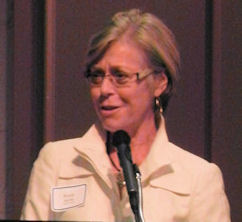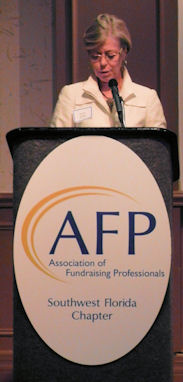 In a Wall Street Journal blog post, Robert Frank reports that “According to a survey of millionaires from Fidelity Investments, 85% of respondents use text-messaging, smartphone applications and social media. One third use social media professionally, with 28% using LinkedIn.”
In a Wall Street Journal blog post, Robert Frank reports that “According to a survey of millionaires from Fidelity Investments, 85% of respondents use text-messaging, smartphone applications and social media. One third use social media professionally, with 28% using LinkedIn.”
Are Millionaires Talking to You?
Over the past couple of years I have been hearing prospect researchers talk about mining Facebook and alumni forums for phone numbers and emails. More recently I’ve been hearing that gift officers are communicating with their major gift prospects on LinkedIn, Facebook and, yes, even Twitter.
Sometimes it is obvious that the donor prospect is oblivious to how public these forums are or can be. But mostly I am hearing that the donor prospect initiates the contact through social media.
For Donors, Philanthropy is Personal, not Professional
If 85% of respondents are using social media, but only 33% of them use it “professionally”, it makes me speculate that donor prospects view their giving as “personal” not “professional” activities. Kind of obvious, huh?
So why should we care if millionaires are using social media? Well, for fundraising it’s a no-brainer. Our organizations need to be engaging and involving donors in social media as another cultivation tool in the toolbox. But what about prospect identification and qualification?
Social Media for Identification and Qualification
The murky issues of privacy and trust begin to swirl when we talk about mining data from social media – especially with privacy conscious millionaires! But I also think that using social media in fundraising serves to highlight how prospect researchers and fundraisers work best when working together. Here’s how:
(1) If a gift officer is invited to friend a donor prospect over a private network, it is the same as visiting the prospect in her/his home. You get to view the photographs on the mantel – so to speak – such as pages liked, friends, photos, videos and of course, posts. But that information can only be known and used by a researcher if it is communicated (yes, I’m talking about notes in the database as well as verbal conversations)
(2) A prospect researcher shouldn’t ignore relevant public information, even when it is left open on a social media network. Conversations with the gift officer might be necessary and wise before saving personal information gleaned from Twitter, blogs, Facebook etc., but key insights into giving motivations can be found and should be communicated. We never, ever want to record embarrassing things on a donor prospect record, but ignoring social media is not acceptable either.
More on Privacy and Prospect Research
If you want to learn more about privacy and prospect research, check out the video below by Aspire Research Group that puts a little fun into the subject. For comprehensively researched prospect profiles, click here.




 It takes a community to support a nonprofit organization or academic institution and Aspire Research Group is pleased to announce that
It takes a community to support a nonprofit organization or academic institution and Aspire Research Group is pleased to announce that 
 The
The  The New York Times ran an article today entitled “
The New York Times ran an article today entitled “